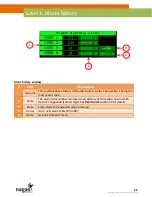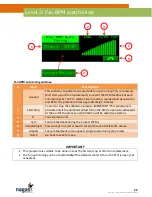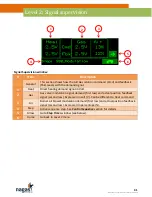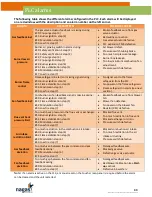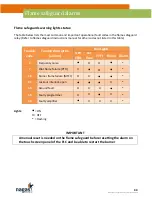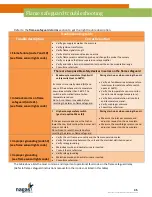
43
Installation and operation manual
–
DTHC-V4-2020
1.
Measure distance between the two drain outlets of the heat exchanger.
2.
Cut the flexible tube and thermal insulation as necessary to obtain correct length between the pre-
installed tee fitting and 90deg elbow fitting (supplied but not installed). Warning! Be careful not to cut
the heat trace cable.
3.
Connect the provided 90deg elbow fitting on the end of the drain tube (same side as the heat trace
cable exits the thermal insulation). Check if center to center length is correct between the fittings.
Note: as you push the tube will expand over the barb and as the tube relaxes to its original diameter
the barb will grip and seal it.
4.
Pull the preassembled heat trace drain line (starting with the ac power cord side) through both large
pre-punched holes located on the vertical walls of the casing. Note: the entry hole is located on the
exterior side wall (on the same side as the gas supply inlet), and the second hole is located on the
interior central wall.
5.
Make sure the ac power plug and the gfci protection housing are hanging inside the cabinet housing.
6.
Connect the loose ends of the 90deg elbow and tee fittings to the rigid drain tubes that are already
connected to the drain outlets of the heat exchanger.
7.
Make sure the drain line (and extra tube or pipe by others) is sloped a minimum of 1/4-inch per foot,
starting from the heat exchanger to the where the drain line terminates, or it could cause drain clogs.
8.
To prevent flue gas from entering the building and living space you must form a p-trap before
discharging the condensate into the sewer drain pipe (or where the condensate piping terminates).
You can either build one with extra pipe and fitting, or install a preassembled p-trap, or you can form a
circular loop with the drain line (12in. Diameter minimum) as shown on figure #6. Note: make sure
your drain line is long enough if you want to form a circular loop (one loop equals an extra length of
approximately four times the diameter of loop). The p-trap must be filled with water before starting
the unit.
9.
Once your condensate drain line installation is completed start the operation of the heat exchanger
and inspect all your installation to make sure that there a no condensate and flue gas leakage.
10.
Plug the heat trace ac plug into your dedicated ac outlet. Note: ac duplex receptacle w/nema 5-15
grounded sockets and 120vac power supply by others.
11.
Push “reset” button on the cord set ground fault device until light comes on. If light does not
illuminate check power to outlet. Do not remove or tamper with the cord set.
12.
Push “test” button and light will go off. This
indicates that the electrical circuit is intact and fully
protected.
13.
Push “test” button again and light will come on. This indicates that your heating cable is working.
14.
Follow this test procedure before each season and monthly while in use.
15.
For more details about the heating cable (heat-line paladin freeze protection system) please refer to
the manufacturer installation and operation manual included with this kit. It is essential to read and
follow all the instructions and warnings in the manual, prior to assembly, setup or use, in order to
operate correctly and avoid damage or serious injury.

